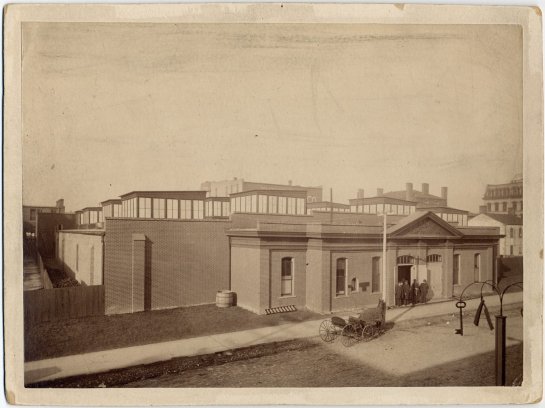How relevant is to mention a modern clothing-optional event like World Naked Bike Ride in connection with Lupercalia, an ancient Roman festival (see my previous post [1]; also [2-3])? If we agree with the point of view that “phenomena of the Classical Age” are not “only extremely complex but utterly alien to us”, then we should refrain from labelling them “with modern catchwords like Socialism, Impressionism, Capitalism, Clericalism” [4] (and Naturism, or Nudism as well). However, are the practices of the Greco-Roman culture indeed “immeasurably alien and distant” from “our inner selves”?
‘Culture’ can be defined “as a learned pattern of behavior”, which is a way how people live their lives [5]. It is considered “as a complex combination of actions and mechanisms produced by continuous social interactions, generating processes of sense making and reformulation of the process of reality” [6].
Cultures distributed in time and space around the world are different. But, there are some things that all cultures have in common [7]. It is not surprising, because we “see no evidence that our brains and personalities have changes much since” “modern humans, who looked just like us, emerged from Africa more than 100,000 years ago”. Our “wants, dreams, personalities, and desires have probably not changed much in 100,000 years” [8].
The practices universally available across all cultural traditions include “the events and activities” of days of special significance called ‘feasts’, ‘festivals’ or ‘holidays’ [9]. “Feasting is certainly a widespread, almost universal behavior, and it has persisted for many thousands of years” [10]. “Feasts and festivals, whether religious or secular, national or local, serve to meet specific social and psychological needs and provide cohesiveness to social institutions”. Feasts and festivals “have flourished in both ancient and modern civilizations” [9].
It is believed that “most secular holidays … have some relationship – in terms of origin – with religious feasts and festivals”. Even the modern “practice of vacations … is derived from the ancient Roman religious calendar” [9].

Lupercalia. Based on painting by Annibale Carracci in Palazzo Magnani in Bologna; printmaker: anonymous (ca. 1677)
Of course, the World Naked Bike Ride can be hardly viewed as a successor of an ancient Roman festival, but there is a symbolic correspondence between them. The very abandonment of clothing takes the participants of such events to a reality different from that of everyday life. This, in turn, may sow the seeds of a new common vision of decency, propriety, and obscenity, and give rise to the reality of a society with a more open and tolerant attitude towards nudity.
The current list of clothing-optional events in Wikipedia [11] includes Burning Man and naked cycling events (not limited to World Naked Bike Ride), together with 25 others of different kind. Nudist festivals have been gaining popularity. More and more people are discovering that “normal, everyday activities could be made more interesting without clothes on” [12].
References
[1] Lupercalia as an ancient clothing-optional event – Vadimage Blog
https://vadimage.wordpress.com/2020/02/23/lupercalia/
[2] Lupercalia – Wikipedia
https://en.wikipedia.org/wiki/Lupercalia
[3] World Naked Bike Ride – Wikipedia
https://en.wikipedia.org/wiki/World_Naked_Bike_Ride
[4] Oswald Spengler, The Decline of the West: The Complete Edition – Internet Archive
https://archive.org/details/Decline-Of-The-West-Oswald-Spengler/page/n1/mode/2up
[5] Richard Ibuh, The Kayans, Partridge Publishing Singapore, 2014
https://books.google.com/books?id=K3-IBAAAQBAJ
[6] Emanuele Schember et al., The internal structure of the social representation of culture: an empirical contribution, IJASOS – International E-Journal of Advances in Social Sciences, Vol. I, Issue 2, August 2015
http://ijasos.ocerintjournals.org/tr/download/article-file/89504
[7] Do Different Cultures Have Things in Common? – Anthropology 4U – Medium
https://medium.com/@anthropology4u/do-different-cultures-have-things-in-common-ffd4135d31e4
[8] Michio Kaku, Physics of the Future: How Science Will Shape Human Destiny and Our Daily Lives by the Year 2100, Penguin, 2011
https://books.google.com/books?id=MLkHa1KZF4wC
[9] Feast – Encyclopædia Britannica
https://www.britannica.com/topic/feast-religion
[10] Brian Hayden, The Power of Feasts, Cambridge University Press, 2014
https://books.google.com/books?id=gLhUBAAAQBAJ
[11] Category:Clothing-optional events – Wikipedia
https://en.wikipedia.org/wiki/Category:Clothing-optional_events
[12] Dillon DuBois, Clothing-Optional Festivals Around the World – The Vacation Rental Experts
https://www.alltherooms.com/blog/clothing-optional-festivals-around-the-world/





